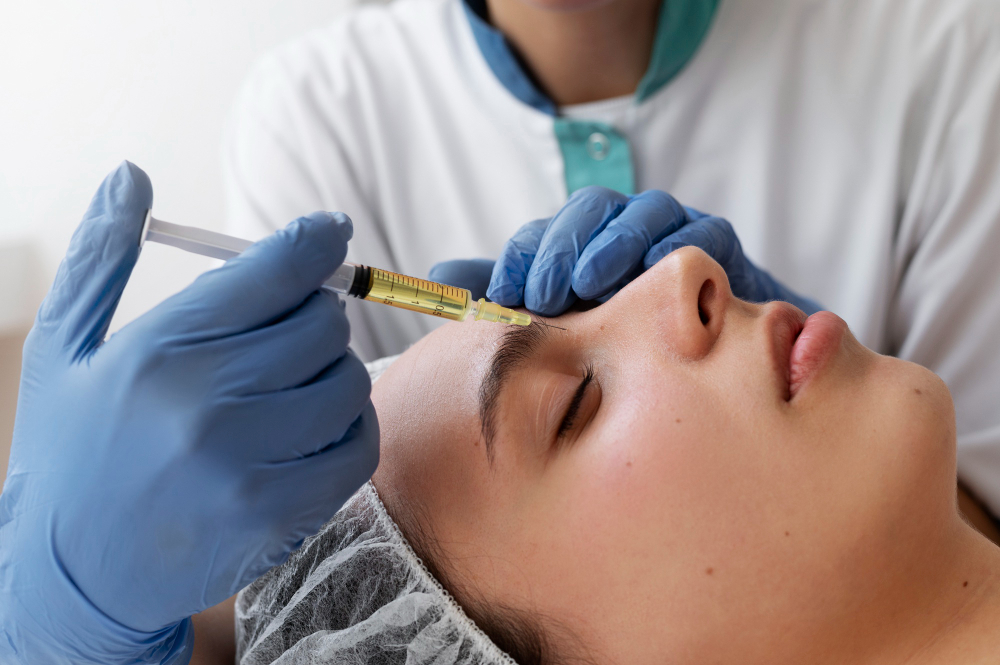Platelet-rich plasma (PRP) therapy has become one of the most sought-after treatments for both male and female pattern hair loss. By concentrating and reinjecting your own platelets into the scalp, PRP delivers powerful growth factors that stimulate follicle repair, improve blood supply, and extend the hair growth cycle. One question we are often asked at Rejuvence Clinic is whether it is safe and effective to have PRP treatments during your period.
Menstrual Cycles and Hair Treatments
During menstruation, women experience changes in hormone levels, particularly fluctuations in oestrogen and progesterone, alongside the release of inflammatory mediators. These hormonal shifts can cause temporary symptoms such as fatigue, cramping, bloating, and heightened sensitivity to pain.
From a medical perspective, there is no strict contraindication to having PRP injections during your period. The treatment remains safe, and the platelets extracted from your blood will still contain the growth factors needed to stimulate the scalp. However, there are a few considerations worth keeping in mind:
- Pain Sensitivity: Many women report that their pain threshold is lower during menstruation. As PRP involves multiple scalp injections, the procedure may feel more uncomfortable than usual.
- Bruising and Bleeding: Hormonal changes can affect blood vessel tone and clotting. While the risk is small, there may be a slightly increased chance of minor bruising at the injection sites.
- General Comfort: Some women prefer to postpone elective treatments during their period simply because of low energy or discomfort, although this is a matter of personal preference rather than medical necessity.
PRP Efficacy and Menstrual Cycle Timing
The good news is that the efficacy of PRP is not affected by the menstrual cycle. The platelets harvested during your period are just as potent as at any other time. Research into PRP in hair loss consistently shows that outcomes depend more on the quality of the PRP system used and the frequency of sessions rather than timing around the menstrual cycle. At Rejuvence Clinic, we use advanced systems such as Magellan TruPRP (level 2) and Angel Arthrex (level 3), both designed to deliver a high concentration of platelets and growth factors for optimal results.
Reflections from Rejuvence Clinic
At Rejuvence Clinic, all patients undergo a comprehensive 45-minute consultation with our hair specialist, Dr Ghani, before beginning PRP therapy. We always encourage women to be open about their menstrual cycle when booking sessions. From our experience, most patients can comfortably undergo PRP during their period, but a small number prefer to reschedule if they are experiencing significant cramps, fatigue, or heightened sensitivity.
Dr Ghani emphasises that comfort and patient experience are just as important as clinical outcomes. If a patient feels physically well, there is no reason to delay treatment. However, for those who would rather wait until after their period, we can easily rearrange appointments without compromising their long-term treatment plan.
We also remind our patients that PRP works best as part of a layered strategy, often combined with medical treatments such as minoxidil, finasteride (for men), or spironolactone (for women), as well as nutritional support through Replenology supplements. Together, these approaches ensure the strongest and most sustainable results, regardless of cycle timing.
Final Thoughts
You can safely have PRP treatment during your period, and the therapy will remain just as effective. The main consideration is comfort, as some women may find the procedure more sensitive or tiring during this time. At Rejuvence Clinic, we work closely with our patients to schedule PRP sessions in a way that fits their lifestyle and ensures the best possible experience and outcomes.
If you are considering PRP but have questions about timing around your cycle, cost of PRP hair treatment, we recommend booking a consultation with us. We will provide clear, honest guidance and help design a personalised treatment strategy that suits your needs and supports long-term hair health.
📚 References
- Panchaprateep, R. (2024). Medical treatment for androgenetic alopecia. Facial Plastic Surgery.
- Donnelly, C., Minty, I., Wong, Y.Y. (2024). The role of PRP in androgenetic alopecia: a systematic review. Journal of Cosmetic Dermatology.
Zhang, G., Song, Y., Zhao, Y., Pan, Z. (2025). Clinical application and research progress of platelet-rich plasma in dermatology. Hematology.

